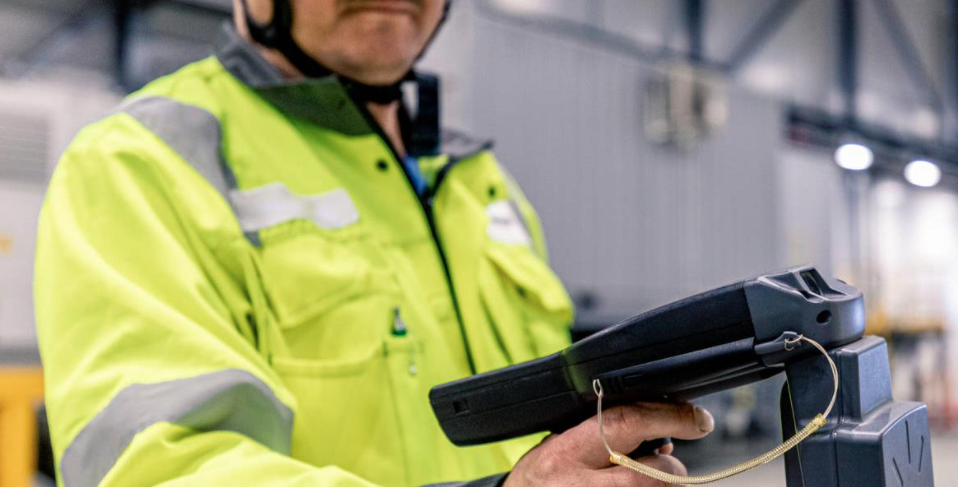
Products
Pulp
Test & Measurement
Metsä Fibre targets pulp traceability with RFID tracking system
June 11, 2020 By P&PC Staff
 Photo: Metsä Fibre
Photo: Metsä Fibre Metsä Fibre’s RFID tracking system is designed to improve traceability of pulp as it moves throughout the distribution system.
The RFID (radio frequency identification) tracking system is based on a small sticker that contains an electronic tag. A unique RFID tag is attached to every pulp unit.
An RFID tag is akin to a small price tag that contains information on the pulp unit. The tag makes it possible to monitor the data of a pulp batch in real time.
The RFID tag contains a microchip that stores the pulp batch number and the batch data. The tracking tag can store more information than a barcode. With the RFID tracking method, the quantity, technical properties and latest location of a pulp delivery can be verified in real time.
The tag is attached on both sides of a pulp unit with water-soluble glue. The tag can be scanned even if it is not visible. The tracking tag is scanned when the unit leaves the mill and at the harbour before transport.
The RFID scanner can be hand-held or fixed, for instance, at the mill’s pulp conveyor.
When the tag is scanned, Metsä Fibre’s system connects the quality data of the pulp batch to the number sequence of the RFID tag and sends the data to the Fibre Online service, where the customer can check in advance when the shipment is going to arrive.
The RFID tag is scanned for the last time when the unit arrives at the customer’s site.
The tag disappears during slushing and does not need to be separately removed from the batch.
However, the quality data concerning the pulp batch remain in the Fibre Online service, which enables the customer to also find out afterwards the batch number and pulp grade of each product.
Print this page